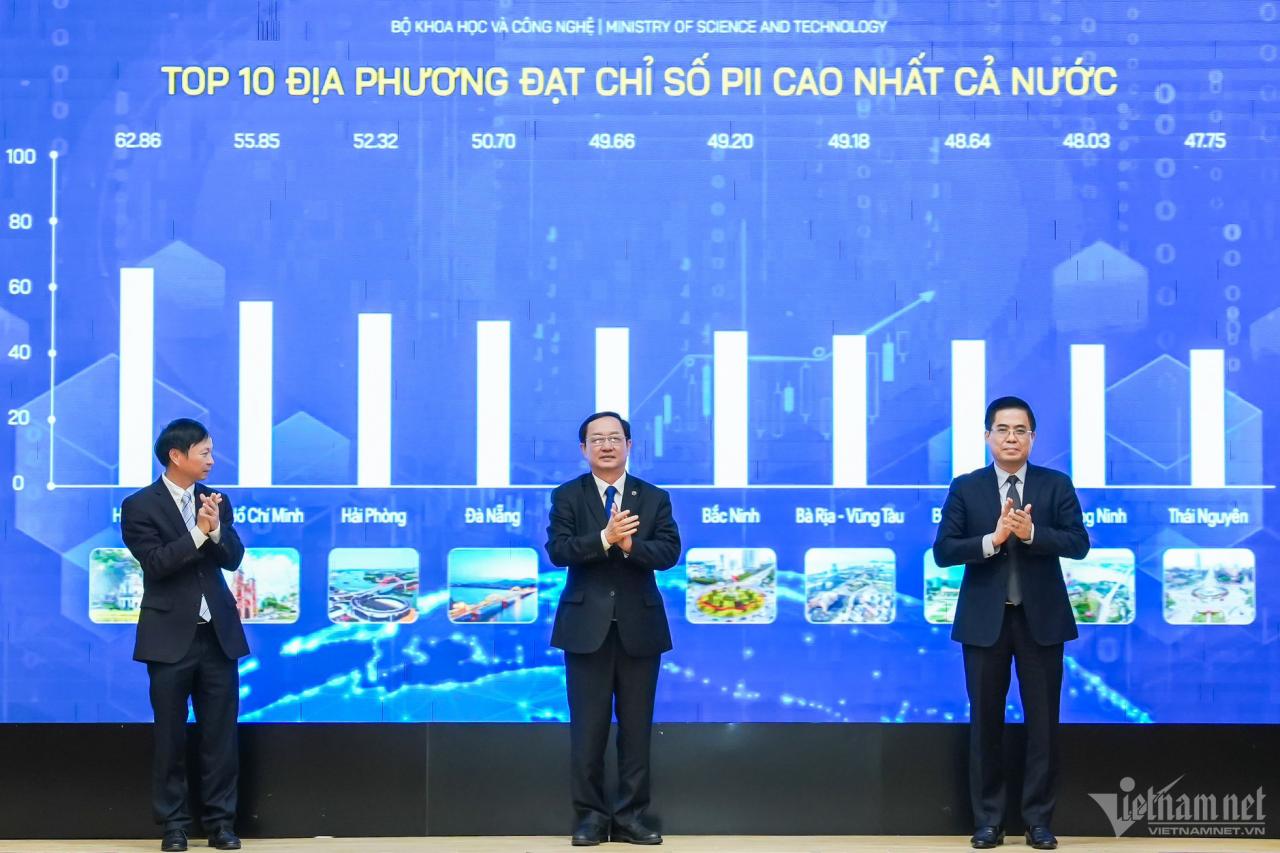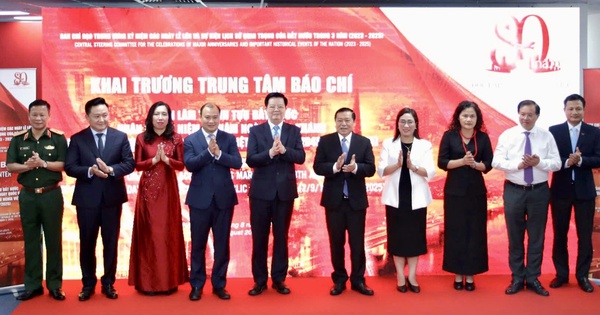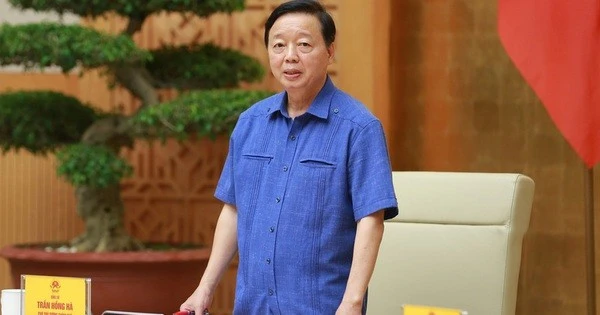
The Ministry of Science and Technology announced the results of implementing the Local Innovation Index in 2023. Photo: Trong Dat
According to the Ministry of Science and Technology, the top 10 localities leading in innovation in 2023 include: Hanoi, Ho Chi Minh City, Hai Phong, Da Nang, Can Tho, Bac Ninh, Ba Ria Vung Tau, Binh Duong, Quang Ninh and Thai Nguyen. In the first time the PII Index was announced, Hanoi was the leading locality in the country in terms of local innovation index. The assessment results show the similarity between the PII ranking and the development status of the localities. The localities in the leading group are provinces and cities with favorable natural and geographical conditions. The provinces and cities in the top 10 in the PII index are all concentrated in the Red River Delta and the Southeast region. These are places where industry, construction and services account for a high proportion of the economic structure, have many industrial parks, have developed infrastructure and have strong science, technology and innovation activities. In contrast, localities in the bottom group are mainly concentrated in the Central Highlands, the Northern Midlands and Mountains. These are places with limited socio-economic development, geographical location and natural conditions that are not favorable for the development, application of science, technology and innovation. However, direct comparison between localities is only relative and is not the main purpose of the Index, because each locality has different conditions, characteristics and development orientations.
Minister of Science and Technology Huynh Thanh Dat. Photo: Trong Dat
Sharing at the announcement ceremony, Minister of Science and Technology Huynh Thanh Dat said: “ The PII index will be a useful document, providing scientific and practical basis for agencies, organizations, individuals and local leaders to use in building and implementing policies to promote socio -economic development based on science, technology and innovation ”. “ The Ministry of Science and Technology also believes that this will be a useful reference document for investors on the development environment and resource conditions for production and business activities in localities ”, said Minister Huynh Thanh Dat.The PII index is built closely following the structure of the Global Innovation Index (GII) published annually by the World Intellectual Property Organization (WIPO). Previously, the GII index was used by the Government since 2017 to refer to, develop and promulgate policies to promote innovation in Vietnam. The 2023 PII index has 52 indicators, divided into 7 pillars, including 5 input factors that facilitate development: Institutions; Human capital and research and development; Infrastructure; Market development level; Enterprise development level and 2 output pillars reflecting the results: knowledge, innovation and technology products; Impact. Data for the construction of the PII 2023 index set is taken from two main sources, including statistical and management data officially published by central ministries, departments and branches and data collected and provided by localities. |





![[Photo] Prime Minister Pham Minh Chinh chairs the conference to review the 2024-2025 school year and deploy tasks for the 2025-2026 school year.](https://vstatic.vietnam.vn/vietnam/resource/IMAGE/2025/8/22/2ca5ed79ce6a46a1ac7706a42cefafae)

![[Photo] President Luong Cuong receives delegation of the Youth Committee of the Liberal Democratic Party of Japan](https://vstatic.vietnam.vn/vietnam/resource/IMAGE/2025/8/22/2632d7f5cf4f4a8e90ce5f5e1989194a)











































































Comment (0)